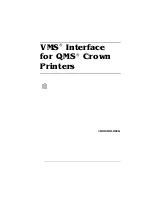
Available Breeze configurations
23
Available Breeze configurations
You can install Breeze on one server or on a group of connected servers, usually called a cluster.
The terms in your Breeze license determine which configuration is allowed. The single-server
configuration is easier to administer.
Depending on your organization’s licensing and performance needs, you may choose to install
Breeze in a multiserver configuration. You will need a special Breeze license file to run a Breeze
cluster. If your Macromedia Breeze license permits, you can install Breeze Server on two or more
computers and then cluster the computers with load balancing and failover.
Clustering Breeze has the following advantages:
•
You can effectively use third-party hardware or software to provide load balancing and failover
for HTTP requests.
•
All computers in a cluster have copies of the same contents. If one computer in the cluster fails,
the content on another computer in the cluster can take over and supply the same content.
1433
Yes
Default=any Yes. If SQL Server
is used, the default
is the IP address of
computer.
If the embedded
engine is used, the
default value is the
Breeze
LOCAL_HOST
variable.
2909 Yes
127.0.0.1
Yes
Private
JNDI
No
8505 Yes
Internal
hostname.
This IP
needs to be
visible only
to the
systems in
the cluster.
Yes
Private
HTTP
No.
Breeze uses
secure random
numbers that are
generated each
time the application
service restarts
.
These are stored in
the database. Other
servers in the
cluster must prove
they have the
database password
by signing their
request with the
random number.
8510
Yes
127.0.0.1
No
Private
HTTP
Installation Console.
Can be turned off if
the Breeze Installer
is not used.
Port
Port
Configurable
Bind
Address
Bind Address
Configurable
Access Protocol
Password
Protected
Summary of Contents for BREEZE 5
Page 1: ...Installation and Configuration Guide...
Page 30: ...30 Chapter 1 Before You Begin...
Page 56: ...56 Chapter 3 Installing and Upgrading Breeze...
Page 100: ...100 Index...
















































